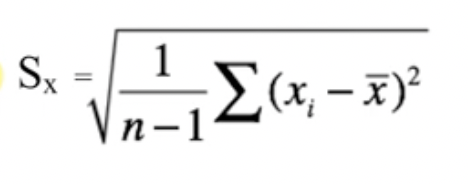1.2: Histograms, Box Plots, Outliers, and Standard Deviation
Introduction to Histograms
- Histogram: a bar graph for quantitative data
- The horizontal axis is divided into classes
- Each class needs to cover the same range of values
- Generally, 5-7 classes is a good minimum
- The more classes, the more detail/nuance shown
- The vertical axis measures how much data is in each class
- The bars must be touching
- If a data point is on the break of a class group (on a tick mark on the x-axis), it is included in the right bar
- Frequency histogram: a histogram showing the number of data points
- Relative frequency histogram: a histogram showing the percent of data
- Can be made by taking the frequency in each class and dividing it by the total number of data points
- The center is generally found by estimation, especially if only a graph is given
- A histogram displays how many pieces of data are in each class
Histograms must have
- Consistent scales on both axes
- Labels for both axes
- A break on the x-axis if it does not start at 0
- The y-axis starting at 0
Outliers
Data points are considered outliers if they lie…

Eg. data set: 18, 19, 13, 2, 15, 19, 15, 31, 17, 16, 29
- Q1 = 15
- Q3 = 19
- IQR = Q3 - Q1 = 4
- Q1 - 1.5(IQR) = 15 - 1.5(4) = 9 → anything below 9 is an outlier
- Q3 + 1.5(1QR) = 19 + 1.5(4) = 25 → anything above 25 is an outlier
- So, 2, 29, and 31 are outliers
Choosing Relevant Measurements
Mean and Standard Deviation
- Mean is the numerical standardized average of a set of data
- Standard deviation is the spread of data about the mean
- Standard deviation uses the same units as the original data
- Skew and outliers influence both mean and standard deviation
- Skew: the extent to which a graph is pulled to one side or centered around the middle
- If skew/outliers are present in a data set, this means that mean and standard deviation should not be used
- These measurements work well when data is approximately symmetrical with no outliers
Median, Quartiles, Range, and IQR
- Resistent to outliers
- These measurements work well when data is skewed and/or contains outliers
Measuring the Spread of Data
- Range = maximum - minimum
- IQR = Q3 - Q1
- Standard Deviation

- x̄ = mean
- Standard deviation measures the rough average distance between each point and the mean
- Larger standard deviations indicate that there is more data further from the mean
- Moderate standard deviations indicate that data is moderately spread around the mean
- Smaller standard deviations indicate that there is more data clumped closer to the mean
- Variance
- Variance is also equal to the square root of standard deviation
- Remember to always plot data; measures of spread and center only display specific facts about a data set, but graphs give the best overall pictures of distributions
